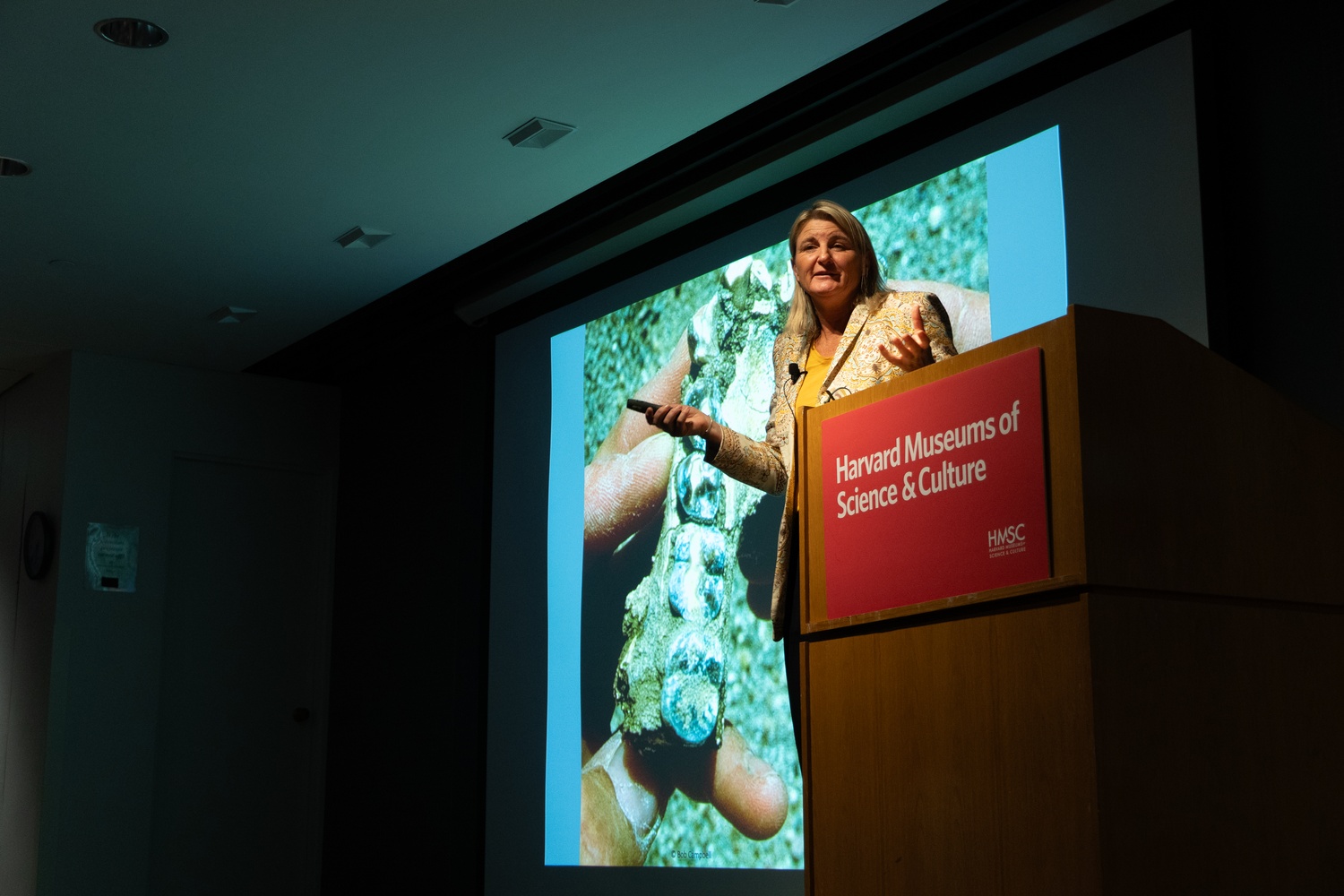
News
Summers Will Not Finish Semester of Teaching as Harvard Investigates Epstein Ties

News
Harvard College Students Report Favoring Divestment from Israel in HUA Survey

News
‘He Should Resign’: Harvard Undergrads Take Hard Line Against Summers Over Epstein Scandal

News
Harvard To Launch New Investigation Into Epstein’s Ties to Summers, Other University Affiliates

News
Harvard Students To Vote on Divestment From Israel in Inaugural HUA Election Survey
Paleoanthropologist Louise Leakey Talks Turkana Basin Discoveries at Peabody Museum

Paleoanthropologist Louise Leakey, the granddaughter of Mary and Louis Leakey, who first determined that early humans evolved in Africa, presented a history of her family’s research in north Kenya at the Peabody Museum on Thursday.
Leakey, an Anthropology professor at Stony Brook University, spends seven months each year in Kenya as the Director of the Koobi Fora Research Project, which excavates and studies hominin fossils from the Turkana Basin. Her lecture was part of the 2025 Hallam L. Movius, Jr. Lecture series.
Louise Leakey has carried on the work of two generations of Leakey researchers, studying the evolution of humans since their least common ancestor — which resembled a chimpanzee — and early members of the genus Homo. Paleoanthropologists like Mary and Louis Leakey initially developed the enduring theory that humans’ unique anatomy is a result of the transition to bipedalism.
“It is a very important time in the world to realize that we do have a common past and we have a common future,” she said.
“What we’ve been focused on in our work is this story — on the upright, walking ancestral life of hominins”
Leakey’s parents, Richard and Meave Leakey, were largely responsible for the expansion of infrastructure around the research site, intent on keeping the fossils close to their burial sites. The Lake Turkana Institute, which Richard Leakey founded, allowed researchers to process their artifacts immediately.
At the talk, Louise Leakey said much of her childhood was spent at the Turkana Basin camps. At age 12, she helped her parents at the KFRP excavate the fossil remains of the Turkana Boy — the most complete Homo erectus skeleton from 1.5 million years ago.
Leakey also found her first hominid fossil at age five, becoming the youngest person to make such a discovery.
The site of their research — the shoreline of Lake Turkana in the north of Kenya — has a rich fossil record. According to Leakey, lakes are particularly good at preserving fossils because they contain sediments that bury the animals around them. The Rift Valley in East Africa also has high volcanic activity, allowing for distinct chemical signatures that are useful in dating fossils.
“So you’ve got a really good geochronological chronological sequence throughout the rift that allows you to work out where you are in time,” she said.
Leakey’s current research projects include the re-excavation of older sites from the 1970s and 80s, as well as digging around any new fossils found around the basin. Last year, her team published findings of footprints left by two distinct hominid species — both from around 1.5 million years ago — as evidence for interaction and coexistence of Homo erectus and Paranthropus boisei in Africa.
“For the very first time, you could see that two different species were using the same shoreline environment,” she said.
Leakey said the research in Kenya is beginning to overcrowd storage facilities her father built the Turkana Basin Institute. She emphasized the importance of properly preserving those findings, and expanding the storage sites around the lake basin.
“I feel very strongly that we again need to focus on how we can safeguard these collections for future generations as well,” she said.
Want to keep up with breaking news? Subscribe to our email newsletter.
